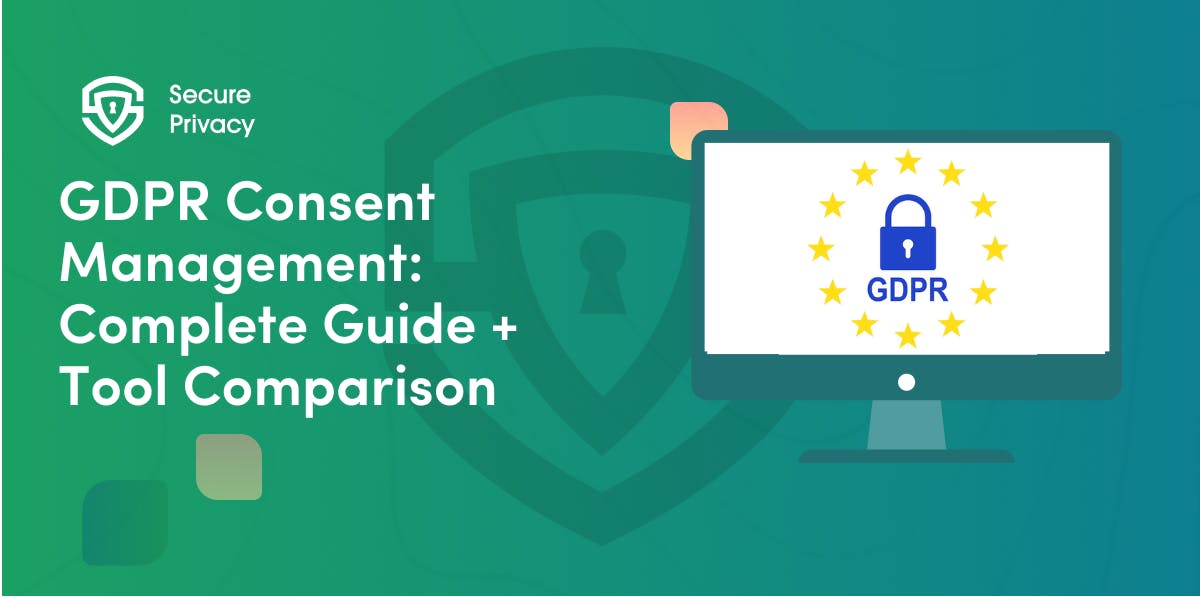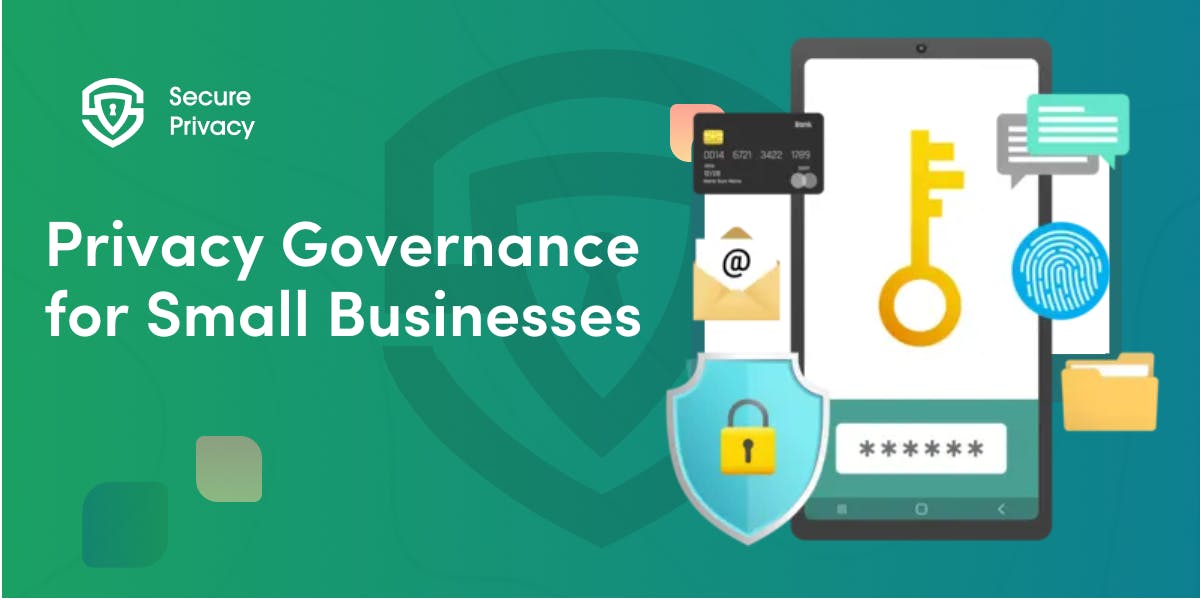Dark Pattern Avoidance 2026 Checklist: The Practical Guide for UX & Privacy Compliance
Your consent banner looks professional. Your signup flow feels smooth. But is it legal? The dark pattern avoidance checklist matters more than ever — regulators just hit Amazon with a $2.5 billion settlement for manipulative design, and the California Privacy Protection Agency explicitly warns that "dark patterns are about effect, not intent.
If your business collects user consent for cookies, tracking, or subscriptions, you need a systematic approach to dark pattern avoidance. This guide provides the practical checklist privacy officers, UX designers, and product teams need to ensure compliance with GDPR, CPRA, and EU Digital Markets Act requirements.
You'll learn what qualifies as a dark pattern under current regulations, how to audit your interfaces for violations, and the specific design principles that satisfy regulatory standards while maintaining positive user experience. Most importantly, you'll discover how seemingly innocent design choices — from button colors to label wording — can inadvertently create regulatory violations that cost millions in fines.

Prioritizing user privacy is essential. Secure Privacy's free Privacy by Design Checklist helps you integrate privacy considerations into your development and data management processes.
What Are Dark Patterns?
Dark patterns are user interface designs that manipulate users into making choices they wouldn't otherwise make. The California Privacy Rights Act defines them explicitly in Section 1798.100(d)(2)(A) as "a user interface designed or manipulated with the substantial effect of subverting or impairing user autonomy, decisionmaking, or choice."
Regulatory Context (GDPR, CPRA, DMA)
GDPR prohibits dark patterns through Article 5(1)(a) on fairness, Article 7's requirement that consent be freely given, and Article 12's mandate for transparent communication. CPRA explicitly defines and prohibits dark patterns, with the California Privacy Protection Agency's enforcement advisory establishing three core principles: clear language, symmetry in choice, and assessment based on effect rather than intent.
The EU Digital Markets Act requires large platforms to avoid designs that "deceive, manipulate or otherwise materially distort" user consent, with violations carrying fines up to 6% of global annual revenue.
Why Dark Patterns Are Now Enforceable Risks
Enforcement actions demonstrate material financial consequences. Google paid €150 million for cookie banner dark patterns. TikTok received a €345 million fine for nudging children toward privacy-invasive settings. Amazon faced $2.5 billion for dark patterns in enrollment and cancellation flows, with individual executives personally named as defendants.
Why Dark Patterns Matter for Compliance
GDPR Transparency & Freely Given Consent
GDPR Article 7 requires that consent be freely given, specific, informed, and unambiguous. Dark patterns undermine "freely given" by introducing pressure or manipulation that impairs user autonomy. Article 12 mandates information in "concise, transparent, intelligible and easily accessible form"—dark patterns violate this by obscuring information or creating complex navigation.
CPRA's Explicit Prohibition
CPRA treats dark patterns as consent-invalidating. The California Privacy Protection Agency warns that "dark patterns are about effect, not intent"—unintentional manipulation still violates the law. The CPPA's enforcement advisory establishes measurable standards: symmetry means the privacy-protective option must be equally easy as the less protective option.
Enforcement Demonstrates Serious Penalties
Amazon's $2.5 billion settlement included internal emails showing executives deliberately designed confusing cancellation processes. Epic Games paid $245 million for dark patterns deterring cancellations. Publisher's Clearing House settled for $18.5 million for misleading claims and small fonts. The FTC now names individual executives as defendants, expanding personal liability.
The Complete Dark Pattern Avoidance Checklist
This checklist translates regulatory requirements into actionable design criteria.
No Pre-Ticked Boxes
Pre-ticked boxes assume consent rather than obtaining it. GDPR requires affirmative action—users must actively indicate consent. All consent checkboxes default to unchecked.
Common Violation: Newsletter signup checkbox pre-selected during account creation
Equal Prominence for "Accept" and "Reject"
Visual hierarchy pressures users when "Accept All" appears prominent while "Reject" requires clicking "Settings." The CPRA symmetry principle and EDPB Cookie Banner Taskforce Report require identical button size, color saturation, and visual weight.
Measurement: Use design tools to verify pixel dimensions match
No Misleading Colors
Green signals "positive" while grey suggests "disabled." Using appealing colors for "Accept" and unappealing colors for "Reject" manipulates through subconscious associations.
Compliant Implementation: Use neutral or identical colors for both options
No Confusing Button Labels
Labels like "Continue," "OK," or "Got it" obscure whether users are accepting or rejecting consent. Use explicit labels: "Accept All," "Reject All," "Save Preferences."
No Bundled Consents
Each processing purpose requires separate consent. Bundling multiple purposes into single "Accept" prevents granular control required by GDPR Article 7(2).
Compliant Implementation: Separate toggles for advertising, analytics, personalization
No "Click Fatigue" or Labyrinthine Opt-Outs
When accepting requires one click but rejecting requires multiple screens, design creates friction that pressures users toward acceptance.
Compliant Implementation: "Reject All" available on first screen with single click; no additional confirmations
Clear Choice Hierarchy
When "Accept All" appears prominently while "Reject" is hidden in small text or accessed through multiple menus, interface design obscures the privacy-protective choice.
Compliant Implementation: Both options visible on initial screen without scrolling
Provide Symmetry in Consent Steps
Count clicks required for each path. If users can accept in one click, they must reject in one click.
Keep Language Neutral and Non-Coercive
Phrases like "Accept and Continue" vs. "Reject and Miss Out" pressure users through implied consequences. Describe options factually without emotional appeals.
Disclose Tracking Purposes Simply
Test: Would a 13-year-old understand? If not, simplify.
Make Withdrawing Consent as Easy as Giving It
When granting consent is instant but withdrawal requires navigating complex menus or contacting support, interface design impairs autonomy.
Compliant Implementation: Preference center accessible from footer; one-click withdrawal
Dark Pattern Red Flags Specific to Cookie Banners
"Reject All" Hidden Behind Multiple Layers
The EDPB Cookie Banner Taskforce Report identifies this as a primary violation. Google's €150 million fine stemmed partly from requiring multiple clicks to reject cookies while offering one-click acceptance.
Compliant Design: Place "Reject All" directly on banner's initial screen, equal in prominence to "Accept All"
Visual Manipulation (Greyed-Out Reject Button)
Greyed-out buttons appear disabled. Dimmed colors reduce visual salience, drawing attention to the accept option.
Compliant Design: Use identical button styling for both options
Forced Consent Walls
Blocking access until users accept cookies violates the "freely given" requirement. EDPB Guidelines state consent walls are not freely given when users have no genuine choice.
Compliant Design: Allow content access with "Reject All" option
Long Vendor Lists with No Bulk Options
Requiring individual review of 50+ vendors without bulk controls creates friction through overwhelming complexity.
Compliant Design: Provide bulk "Reject All Vendors" option alongside granular controls
Dark Pattern Avoidance for SaaS UX
Subscription Flows (Cancellation Obstacles)
Amazon's $2.5 billion settlement provides the definitive case study. Internal emails revealed executives deliberately designed "labyrinthine" cancellation requiring multiple screens while enrollment took seconds.
Compliant Design: One-click cancellation in account settings; no retention offers; immediate processing
Email Marketing Consent
Newsletter signups using pre-ticked boxes violate GDPR's requirement for affirmative action.
Compliant Design: Email checkbox defaults to unchecked; clear label describes content; separate from necessary account consents
Account Creation and Deletion
Account creation should not require consenting to marketing. Account deletion must be self-service.
Compliant Design: Separate required terms from optional marketing; deletion available in account settings with immediate processing
Preference Centers
Dark patterns appear when preference centers are difficult to find or don't save changes reliably.
Compliant Design: Linked from footer; changes save immediately; visual confirmation provided
Dark Pattern Testing Framework for Teams
Run UX Compliance Audits
Schedule quarterly audits documenting each consent flow with screenshots. Measure button sizes, count clicks, review language, and document findings with regulatory references.
Validate Design with Legal & Privacy Team
Require legal sign-off before deploying new consent interfaces. Maintain records of legal review for regulatory defense.
Use Checklists During Sprint Reviews
Before marking consent features complete, verify each checklist item: equal button prominence, plain language, one-click rejection, options visible on first screen.
Ongoing Monitoring with Automated Tools
Baseline compliant interfaces and run automated checks monthly to detect when changes introduce dark patterns. Alert compliance team when deviations detected.
How Secure Privacy Helps You Automatically Avoid Dark Patterns
Consent management platforms automate compliance while simplifying implementation.
Automatically Compliant Cookie Banner Templates
Pre-built banner templates satisfy GDPR, CPRA, and DMA requirements out of the box with symmetric buttons, clear language, and compliant visual hierarchy. Templates update automatically as regulations evolve.
Reject/Accept Symmetry Built In
Platform enforces symmetry requirements automatically. Button sizing, color options, and placement follow regulatory standards, preventing visual manipulation.
No Deceptive UI Allowed in the Builder
The banner builder restricts configuration options that would create dark patterns. Users cannot hide reject buttons, create multi-step rejection flows, or use coercive language.
Automated Scanning for Dark-Pattern-Like Issues
Continuous monitoring detects when website changes affect consent banner display or functionality, alerting administrators of potential compliance issues before regulators discover them.
Privacy-by-Design Defaults
All configuration defaults reflect privacy-protective choices. New banners default to requiring explicit consent, rejecting all cookies by default, and allowing one-click rejection.
FAQs About Dark Pattern Avoidance
What qualifies as a dark pattern under GDPR?
Any interface element that makes consent less than freely given, specific, informed, or unambiguous qualifies as a dark pattern. This includes visual manipulation through color or sizing, confusing language, pre-ticked boxes, bundled consents, or asymmetric effort between acceptance and rejection. GDPR doesn't use the term "dark pattern" explicitly but prohibits these practices through Articles 5, 7, and 12.
Are dark patterns illegal in California?
Yes. CPRA explicitly defines and prohibits dark patterns in Section 1798.100(d)(2)(A). Agreements obtained through dark patterns do not constitute valid consent. The California Privacy Protection Agency's September 2024 enforcement advisory establishes measurable standards for symmetry and clarity, making violations objectively identifiable.
How do I know if my cookie banner has dark patterns?
Measure button prominence, count clicks required for rejection versus acceptance, and assess language neutrality. If "Accept All" appears more prominently than "Reject All," if rejection requires more clicks than acceptance, or if language pressures users toward acceptance, your banner likely employs dark patterns. The EDPB Cookie Banner Taskforce Report provides detailed evaluation criteria.
What are the penalties for using dark patterns?
Penalties vary by jurisdiction but can be substantial. GDPR violations carry fines up to €20 million or 4% of global annual revenue. Recent enforcement includes Google's €150 million fine, TikTok's €345 million fine, and Amazon's €746 million fine. In the United States, FTC settlements have reached $2.5 billion for Amazon and $245 million for Epic Games. Individual executives may face personal liability.
Can I use a consent wall if I offer a free alternative?
Generally no. EDPB Guidelines 05/2020 state that consent walls undermine freely given consent even with free alternatives, unless the service fundamentally requires tracking for core functionality. Simply wanting to monetize through advertising doesn't justify consent walls. Users must be able to access content with "Reject All" option.
How often should I audit for dark patterns?
Conduct comprehensive audits quarterly and review any new or modified consent interfaces before deployment. Regulatory guidance evolves, and gradual interface changes can introduce violations over time. Automated monitoring supplements manual audits by detecting changes in real-time.
Do dark pattern rules apply to B2B SaaS?
Yes. Privacy regulations protect individual data subjects, not just consumers. Employee data, contractor data, and business contact data fall within GDPR and CPRA scope. B2B interfaces requiring consent must meet the same standards as consumer-facing interfaces. The key is whether you're collecting personal information, not whether users are acting in a business capacity.
What's the difference between persuasion and manipulation?
Persuasion provides genuine information that helps users make informed decisions aligned with their interests. Manipulation deliberately impairs decision-making through deception, pressure, or exploiting cognitive biases. Highlighting legitimate product benefits is persuasive; hiding rejection options or using confusing language is manipulative. Regulatory standard: does the interface subvert user autonomy?
Ready to eliminate dark patterns from your consent flows? Start with this checklist to audit current interfaces, prioritize fixes based on regulatory risk, and implement compliant designs that build user trust. Prevention costs less than enforcement — and protects both your users and your business.
Need help implementing compliant consent management? Explore automated solutions that enforce dark pattern avoidance by design, update automatically with regulatory changes, and provide audit trails for regulatory defense.
Get Started For Free with the
#1 Cookie Consent Platform.
No credit card required

GDPR Consent Management: Complete Guide + Tool Comparison
Your website could be costing you €20 million. Every cookie that loads before user consent, every "accept all" button without an equally prominent reject option — these aren't minor oversights. They're violations that data protection authorities are actively hunting.
- Legal & News
- Data Protection

How to Design High-Performing Cookie Banners in 2026
“You're one click away from a €325 million fine”. That's what Google learned in September 2025 when French regulators hit them for cookie consent violations. The message is clear: cookie banner design in 2026 isn't about getting extra clicks anymore — it's about survival.
- Legal & News
- Data Protection

Privacy Governance for Small Businesses: Step-by-Step Guide
You're a 20-person company. A customer asks for their data. Your marketing team just added a new tracking pixel. Your CRM vendor updated their terms. And you just realized you might need to comply with GDPR, CCPA, or both.
- Legal & News
- Data Protection
